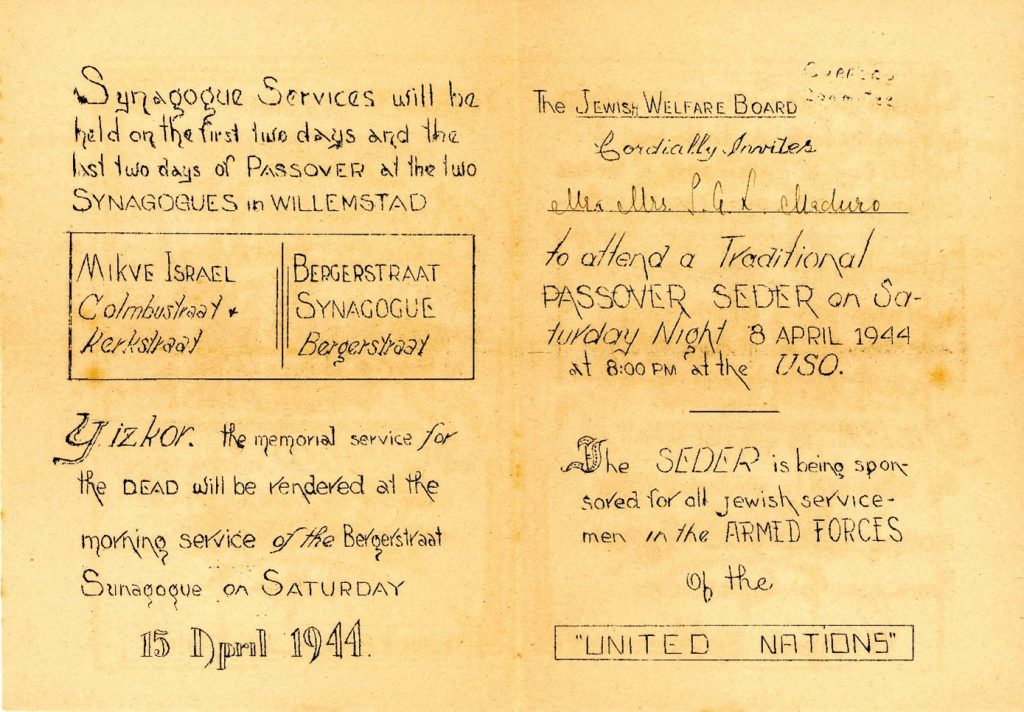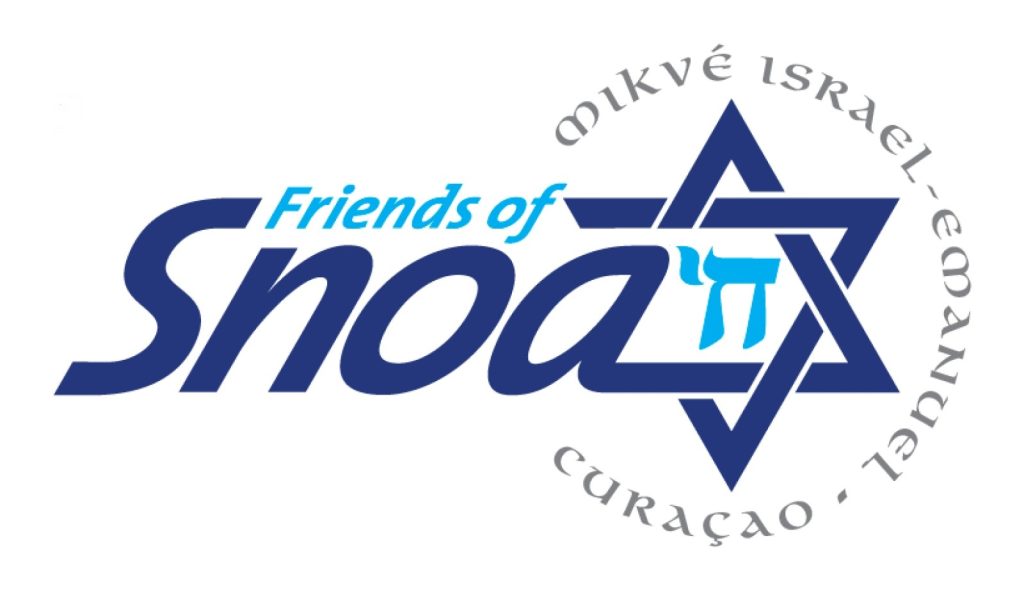About Seders in Curaçao
A story about Seders in our 371 year-old historic community starts with historical research about our community in Emmanuel’s authoritative volumes about the History of the Jews of the Netherlands Antilles.
Emmanuel did not say much about Pesach but what he did write is significant. He wrote that candles were distributed before Pesach to each member – “para escombrar el Hamez”- to search for chametz, leavened food left over at home, while on Passover itself everyone received haroseth. After Pesach, when the Omer is counted until Shavuoth, the Hazzan would publicly declare “Aos Senhores que nao contarrao O Homer que contem sem bençao” or “Those gentlemen [women did not count back then, of course] who have not counted the Omer will go without a preliminary blessing” …. or punished for not counting Omer.
Emmanuel described that “Each person conducted the Seder in his home” but also that Hazzan Baruch de David Duque (1922 – app.1936) “replaced the beautiful Pesah Seder by having the Haggadah read in the synagogue courtyard and then giving the assemblage a little matza and wine as a souvenir.” Hazzan Duque also eliminated the observance of the second day and last day of Passover – which were reinstituted afterwards. I suspect that our Directiva wishes there would still be no last day celebration next week when we will have four services Thursday through Saturday.
A beautiful Seder was held in Curaçao on April 8, 1944. The invitation from the US-based Jewish Welfare Board was addressed to “all Jewish servicemen of the Armed Forces of the United Nations” and was also sent individually to several local Jewish citizens. How very meaningful it must have been for representatives of Curaçao’s Jews to recall jointly our freedom from Egyptian slavery together with servicemen who were in Curaçao protecting us from the horrors of the Second World War.
Let me make two anecdotal remarks about that invitation which is shown at the end of this article. The first is that it mentions that the Yizkor morning service will be at Bergerstraat. This is a misspelling or erroneous writing of Bargestraat in Scharloo, named after C.A.H. Governor Barge who was Governor from 1890 to 1901.The second is that in April 1944 it invites “Jewish servicemen in the Armed Forces if the UNITED NATIONS” which was actually founded in October 1945. During the War years, Curaçao had servicemen stationed in Curaçao to protect especially the local Shell refinery from a.o. the Armed Forces of the US, Canada and the UK. The terminology “united nations” is therefore likely used here to reflect the literal meaning, not refer to an organization that still was to be founded.
So if there were likely no community Seders before 1944, were there any after this beautiful joint Seder for the military servicemen near the end of the War? We have found no record (yet) of community Seders before the merger of Mikvé Israel with Temple Emanu-El and assume that Seders continued to be held at home, as Emmanuel had written.

At the Reform Emanu-El community the first community Seder was held in 1959, five years before the merger, in the basement of the Temple. It was led by the Temple’s interim Rabbi Jacob Singer. A community Seder continued to be led in subsequent years by our late friend Rabbi Simeon Maslin at the Temple and these would continue after the merger at Snoa. It would take several years before that annual community Seder moved to the Snoa courtyard. Emmanuel wrote in his History, published in 1970, that “Today a large Seder is held at a club in the city [using] the text of the Reconstructionist Haggadah which was the ritual used then by the newly-merged congregation.” And indeed I recall community Seders being held in several hotel in Curaçao, requiring intensive efforts each year by Snoa’s Sisterhood to ensure that meals were Pesach kosher.
Pesach has been a very important date for our Snoa for the past two hundred and ninety years. It was on the first day of Pesach in 1732 that this beautiful and so meaningful house of worship, our Snoa, was consecrated. Each year on Pesach we remember each of the founders of our synagogue – and that will happen again tomorrow morning during services. For those of you who are visiting us from the US, which include my daughter in law and two grandsons, let me add that this makes our Snoa forty-four years older than the United States of America!
If Matzah is the foremost material good that we associate with Pesach, the haggadah is clearly the second. Throughout history many have collected haggadot. Some of you may know that my late uncle Abram Salas was such a collector of haggadot. I was fortunate to have corresponded with a Chicago attorney Stephen Durchslag about eight years ago in connection with an entirely different matter. Durchslag is considered to have collected the largest collection of haggadot in the world, which he has since then donated to the University of Chicago. When he donated it last year, the collection number not fewer than four thousand five hundred haggadot.
Next time you are in Chicago, this may well be a new and interesting attraction but before then, allow me to end with an invitation to you to visit our fabulous Jewish Cultural Historical Museum of which their holdings include:
- a French original Haggada Recit (de evenemens memorables) de Paques published in 1935;
- a Viennese “Die Pessach-Haggadah” also of 1935;
- ”The Haggadah of the Chinese years”, published in 1967, the first printed edition from a manuscript of the seventeenth-eighteenth century C.E., originating from the earliest Chinese synagogue K’ai-Feng Tu supposedly dating to 1163, south-west of Beijing;
- The Haggadah of the Bene Israel of India in Hebrew and Marathi (Hindustami), a reprint in 1968 from a Haggadah printed in Bombay in 1846 and finally
- The Günzburg Haggadah” a first printed edition in 1962 of an illuminated manuscript from the U.S.S.R. anno 1725.
Pesah Alegre to you all, Hag Pesach Sameach!

